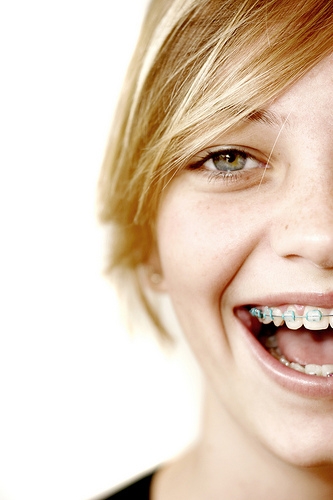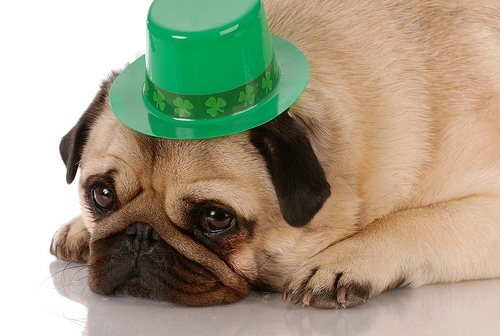April 6th, 2022

The Importance of Facial Protection
Americans from all walks of life should mark April as National Facial Protection Month on their calendars. The American Association of Pediatric Dentistry, Academy for Sports Dentistry, American Academy of Pediatric Dentistry, and American Association of Oral and Maxillofacial Surgeons have combined forces to sponsor this annual campaign, which aims to educate and remind us of the importance of protecting our face and teeth against impacts and injuries.
Wearing a helmet can save your life and prevent devastating physical damage in a variety of situations, from playing football to riding a bicycle. According to the American Association of Oral and Maxillofacial Surgeons, helmets reduce the risk of various head injuries by as much as 85 percent. Whether helmet laws apply in your area or not, Dr. David Baker and our team at Baker Orthodontics want you to make sure you and your loved ones wear helmets with the appropriate safety ratings for specific activities. (A sticker on or inside the helmet will usually indicate this rating.) Helmets can also help save your teeth if they come with an attached faceguard, an essential addition for football players and others involved in contact sports.
Preventing Dental Injuries
A mouthguard can protect you against a variety of dental injuries, such as cracked, broken, or knocked-out teeth. The American Dental Association states that mouthguards play an essential role in preventing up to 200,000 dental injuries each year, and many states mandate their use for sports activities such as football and hockey. The Academy for Sports Dentistry warns, however, that these mouthguards must be custom-fitted as precisely as possible to prove effective. Have a professional-quality mouthguard molded and fitted by our team at Baker Orthodontics for better protection than a generic store-bought or “boil-and-bite” variety can offer. These cheaper versions tend to wear out quickly, interfere with proper breathing, and provide uneven degrees of cushion against impacts. Always have a fresh mouthguard fitted for each new sports season.
Choose the right combination of helmet, faceguard, and mouthguard to protect your teeth and face this April, and tell your friends to do the same! To learn more about mouthguards, or to schedule an appointment with Dr. David Baker, please give us a call at our convenient Portland or Vancouver office!
March 30th, 2022

Well, of course you can chew gum and wear braces. But, should you chew gum and wear braces? That can be a sticky question.
For many years, the answer was a firm “No.” Not only did our favorite chewables literally gum up the (dental) works, but they were filled with loads of the sugar that cavity-causing bacteria love to feed on. The result? A much better chance of damage to your orthodontic work, and a higher risk of cavities near your brackets and wires.
But times, and gum recipes, change. Today’s sugar-free gum provides us with some new ideas to chew over.
- Sugarless gum is much less sticky than regular gum, so it is much less likely to stick to your appliance. If there is any chance that gum will damage your wires or brackets, we’ll let you know that it’s best to wait until your braces are off to indulge.
- Some orthodontic patients find that their jaws and ligaments are less sore if they chew gum for a few minutes after an adjustment.
- Most important, studies suggest that chewing sugarless gum might actually help prevent cavities from forming. How is that possible?
Because chewing gum increases our production of saliva! Okay, we don’t normally find saliva an exciting, exclamation-point-worthy topic, but let’s look at the dental benefits:
- Saliva washes away food particles and bacteria. And because braces can trap food when we eat, it’s great to have some help washing away any meal-time souvenirs.
- Saliva helps neutralize acids in the mouth. The acids found in foods and produced by oral bacteria lead to cavities, so diluting and neutralizing their effects provide important protection for our enamel.
- Saliva helps bathe the teeth in minerals that can actually rebuild weakened enamel. Acids in the mouth attack minerals in the enamel such as the calcium and phosphate that strengthen our teeth. Fortunately, saliva provides calcium, phosphate, and fluoride that can actually help rebuild weakened enamel.
So, should you chew gum and wear braces? The real question is, should you chew gum while you’re in braces? Dr. David Baker and our team are more than happy to provide the right answer for you! Talk to us at your next visit to our Portland or Vancouver office about the potential benefits and drawbacks of dentist-approved sugarless gum. Depending on the kind of gum you choose and the kind of orthodontic work you are having done, the answer just might surprise you.
March 23rd, 2022

Everyone wants a naturally aligned and beautiful smile, and it is no secret that orthodontic braces from Baker Orthodontics can help deliver one. However, there are greater benefits to wearing braces than just having straight teeth. You’ll gain many oral health benefits in addition to the cosmetic ones.
Tooth Decay and Gum Disease
Crooked or crowded teeth may overlap each other and create tight spaces in between. These can make it very difficult to brush and floss effectively, allowing bacteria and plaque to build up, and eventually leading to tooth decay and gum disease. With orthodontic treatment, your teeth will become properly aligned and spaced, which allows for more effective brushing.
Difficulties with Speech
Your teeth play an essential role in speech. When they are out of line or lean too far forward or backward, this can affect your speaking patterns, and possibly cause embarrassment and frustration. Braces can readjust the positioning of the teeth to allow for clearer, more professional speech.
Bone Erosion
Bone and gum tissues begin to erode when there are no teeth to support. This is also true for poorly aligned teeth that leave gaps and spaces or place too much pressure on the jawbone due to a bad bite. With braces, the bones and tissues are less likely to erode and can continue to support the teeth in their new alignment.
Digestion
Your teeth play an important role in digestion. Before food ever enters your stomach, it has been partially digested by the teeth. If teeth are severely out of line, however, they may not play their role in breaking down food as effectively as they should. With braces, your teeth will be straightened into optimal alignment for eating and chewing.
Dr. David Baker and staff will be happy to answer any of your questions about your orthodontic treatment. Visit us in Portland or Vancouver today!
March 16th, 2022

On March 17, everyone has a little Irish in them. St. Patrick’s Day is a joyous celebration of Irish heritage. The holiday originated as a commemoration of Saint Patrick, who brought Christianity to Ireland. The saint arrived in Ireland in 432 and earned the reputation of a champion of Irish Christianity. March 17th, the day of St. Patrick’s death, has been commemorated by the Irish for over 1,000 years. St. Patrick’s Day is still observed as a religious feast day by several Christian denominations, but it is better known in the public imagination as a rich celebration of Irish culture.
St. Patrick’s Day has been an official public holiday in Ireland since 1903. Each year, the Irish celebrate with a several-day festival that includes theater performances, music, fireworks, and festive parades. The celebration is also a public holiday in Northern Ireland, Montserrat, and Newfoundland and Labrador. In other parts of the world with heavy Irish populations, it is an unofficial celebration of Irish heritage. Parts of Great Britain, Canada, Argentina, South Korea, Switzerland, New Zealand, the United States, and Australia commemorate the holiday each year. Typical celebrations in these countries include drinking green beer, wearing green, eating traditional Irish foods, parades, and shamrock decorations.
Many people, Irish and non-Irish alike, take part in the “wearing of the green” on St. Patrick’s Day. In fact, the color originally associated with Saint Patrick was blue. His use of shamrocks to explain the Holy Trinity to the Irish made the green clover emblematic of the holiday, leading to the traditional green attire worn by thousands on St. Patrick’s Day. Other little-known facts about St. Patrick’s Day include the following:
- Each year, the United States and Ireland face off in a rugby competition called the “St. Patrick’s Day Test.”
- Montreal celebrates the holiday with an annual parade, which has been held each year since 1824. The Montreal city flag even features a shamrock in its corner, as a nod to its Irish heritage.
- The Guinness World Records named St. Patrick’s Day the “Friendliest Day of the Year.”
- Along with Valentine’s Day, St. Patrick’s Day is one of the most widely celebrated saint’s day in the world.
No matter your cultural heritage, St. Patrick’s Day is a great time to let loose and celebrate your inner Irish-ness! Don your greenest attire and exclaim “Erin go Bragh!” (Ireland forever!) to everyone you meet. From Dr. David Baker - have a great St. Paddy’s day!





 Website Powered by Sesame 24-7™
Website Powered by Sesame 24-7™